Introduction to US-Iran Relations
The geopolitical landscape of the Middle East is witnessing a tense crescendo, with the United States and Iran at its epicenter. Historical animosities have often brought these two nations to the brink of confrontation, yet the recent developments carry an unprecedented sense of urgency and potential for conflict. The intricate weave of military presence, proxy influences, and strategic interests paints a complex picture of the current US-Iran relations.

Historical Overview
The US-Iran relationship has been a roller-coaster of diplomatic engagements and estrangements. From the CIA-backed 1953 coup in Iran to the 1979 Iranian Revolution, which saw the severing of diplomatic ties, the narrative of their interactions is marked by mistrust and ideological discord. The 2015 nuclear deal, known as the JCPOA, was a brief period of thawing relations, but the US withdrawal from the agreement in 2018 under President Trump reignited tensions.
Recent Escalations
Recent events have further strained these ties. The assassination of Iranian General Qasem Soleimani by a US drone strike in 2020, and Iran’s subsequent missile attacks on US bases in Iraq, have marked a new level of hostility. The US and Iran now find themselves dangerously close to direct confrontation, particularly in the strategically volatile regions of the Middle East.
Key Players in the Middle East Conflict
As the specter of confrontation looms large, understanding the key players and their roles becomes critical. The US and Iran, through their military might and strategic alliances, have carved spheres of influence in the Middle East, often crossing paths in conflict zones like Syria, Iraq, and Yemen.

US and Iranian Military Presence
The US maintains significant military presence in the Middle East, with bases in Iraq, Syria, and naval forces in the Persian Gulf. Iran, on the other hand, exerts its influence through the Islamic Revolutionary Guard Corps (IRGC) and Quds Force, extending its reach across the region.
Proxy Groups and Alliances
Both nations have cultivated alliances with various proxy groups. The US supports groups like the Syrian Democratic Forces in Syria, while Iran backs organizations such as Hezbollah in Lebanon and the Houthi rebels in Yemen. These proxies often act as extensions of their patron’s geopolitical ambitions, further complicating the regional dynamics.
Tensions in Iraq: A Central Battlefield
Iraq has emerged as a central battlefield for US-Iran tensions. The presence of US troops and Iran-backed militias in close proximity has led to frequent clashes and escalations.
US Troop Deployment
Following the 2003 invasion, the US has had a fluctuating military presence in Iraq. As of now, approximately 2,500 US troops are stationed across several bases, including Erbil and Al-Asad Air Base.
Iranian Influence
Iran wields considerable influence in Iraq, primarily through militias like Kataib Hezbollah and the Badr Organization. These groups have carried out attacks against US forces, eliciting retaliatory strikes and raising fears of wider conflict.
Recent Conflicts
The attack on Al-Asad Air Base in Iraq by Iranian-backed forces and subsequent US airstrikes are indicative of the fragile situation. The potential for miscalculation and inadvertent escalation is high, making Iraq a focal point of tension between the US and Iran.
The Syrian Situation: A Complex Battlefield
Syria’s prolonged civil war has provided a stage for US-Iran rivalry. Both nations have divergent interests and have backed opposing sides in the conflict.
Iran’s Role
Iran has been a staunch supporter of the Bashar al-Assad regime. The IRGC and various Shiite militias, including foreign fighters, have fought alongside Syrian government forces. This direct involvement has been crucial in tilting the balance in Assad’s favor.
US Military Strategy
The US military involvement in Syria has primarily focused on the fight against ISIS. With around 800 troops, the US has supported the Kurdish-led Syrian Democratic Forces in northeastern Syria, a region rich in oil resources. This presence, however, has been a point of contention with Iran and the Syrian government.
Impact on the Civil War
The US and Iranian involvement in Syria has not only prolonged the conflict but has also raised the stakes in their bilateral relations. The Syrian theater remains a powder keg, with potential for direct confrontation between US and Iranian forces.
Yemen: The Proxy War Front
Yemen’s tragic conflict is often seen as a proxy war between Iran and a US-backed Saudi-led coalition. The Houthi rebel movement, aligned with Iran, controls significant portions of Yemen, including the capital, Sana’a.
Houthi Rebels
The Houthis, a Zaidi Shiite group, have been in conflict with the Yemeni government since 2004. With Iranian support, they have managed to capture large swaths of territory and have become a formidable force in the region.
US and Saudi Involvement
The US has supported the Saudi-led coalition in Yemen with arms sales and intelligence. This involvement has drawn criticism due to the humanitarian crisis it has exacerbated.
Iran’s Influence
Iran’s support for the Houthis, primarily in the form of weaponry and military advice, has been a significant factor in the conflict. The Houthis have used Iranian-supplied missiles and drones to target Saudi Arabia and ships in the Red Sea, escalating regional tensions.
The Gaza Strip and Israel: A Volatile Flashpoint
The Gaza Strip, controlled by the Hamas militant group, is another flashpoint in the US-Iran confrontation. Iran’s ties with Hamas and the US’s unwavering support for Israel contribute to the volatility of this region.
Iran-Hamas Relations
Iran has forged a close relationship with Hamas, a Sunni Islamist organization. This partnership is somewhat unusual given Iran’s predominantly Shiite influence but underscores Tehran’s strategic interest in countering Israel.
US-Israeli Alliance
The US has maintained a strong alliance with Israel, offering military aid and diplomatic support. This alliance is a critical factor in the US-Iran dynamics, particularly concerning Iran’s stance towards Israel.
Recent Hostilities
Hostilities between Israel and Hamas, such as rocket attacks and retaliatory strikes, have been frequent. Iran’s support for Hamas in these conflicts further strains its relations with the US and complicates any potential diplomatic resolutions.
The Strategic Importance of the Strait of Hormuz
The Strait of Hormuz, a vital waterway for global oil shipments, has emerged as a strategic focal point in the US-Iran standoff. Control and security of this strait carry significant implications for global oil markets and international diplomacy.
US Naval Deployments
The US Navy maintains a robust presence in the Persian Gulf, particularly around the Strait of Hormuz. This presence aims to ensure the free flow of oil and counter any Iranian attempts to disrupt maritime traffic.
Iran’s Maritime Strategy
Iran has occasionally threatened to close the Strait of Hormuz in response to US sanctions and military pressure. Such actions would have severe implications for global oil supply and could trigger a military response from the US and its allies.
Economic and Political Implications of the Conflict
The conflict between the US and Iran extends beyond military confrontations to encompass economic sanctions and political maneuvers. These actions have far-reaching consequences for both nations and the broader region.
Sanctions and Diplomacy
US sanctions have severely impacted the Iranian economy, leading to inflation and economic hardship. Diplomatic efforts to resolve tensions, such as attempts to revive the JCPOA, face numerous challenges, including mutual distrust and domestic political pressures.
Impact on Global Economy
The ongoing conflict has ripple effects on the global economy, particularly in the energy sector. Fluctuations in oil prices and concerns over supply stability are direct consequences of the heightened tensions in the Middle East.
International Responses to the Escalation
The international community has varied responses to the US-Iran escalation. The United Nations, the European Union, and regional players have all expressed concerns and offered different approaches to de-escalation.
UN and EU Positions
The United Nations and the European Union have consistently called for restraint and diplomatic solutions to the conflict. They emphasize the need for dialogue and adherence to international norms to prevent further escalation.
Regional Allies’ Reactions
Regional allies of both the US and Iran have their own stakes in the conflict. Countries like Saudi Arabia and Israel closely align with US interests, while nations like Russia and China view the US presence in the Middle East with skepticism, often siding with Iran in diplomatic forums.
Military Buildup and Defensive Strategies
In response to the escalating tensions, both the US and Iran have enhanced their military capabilities and defensive strategies in the region. This buildup raises concerns about an arms race and the potential for a larger conflict.
US Military Enhancements
The US has increased its military presence and assets in the Middle East, including additional troop deployments and advanced weaponry. This buildup is intended to deter Iranian aggression and protect US interests in the region.
Iran’s Military Preparedness
Iran has responded by bolstering its own military capabilities, focusing on missile technology and asymmetric warfare tactics. These developments demonstrate Iran’s determination to counter US military superiority.
Visit Unicorn blogger for More Articles :



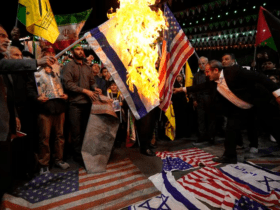
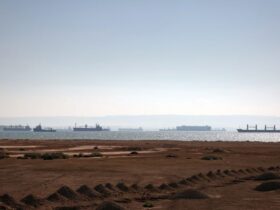
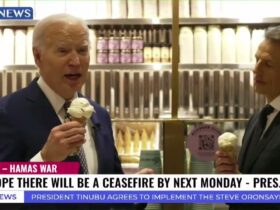
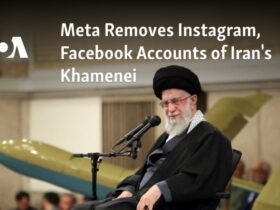














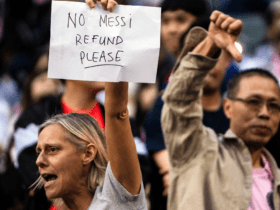


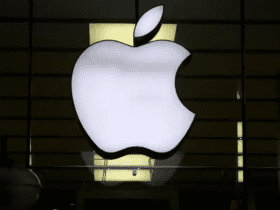


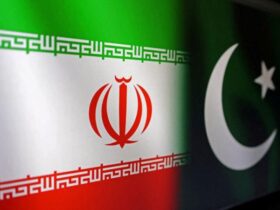

Leave a Reply